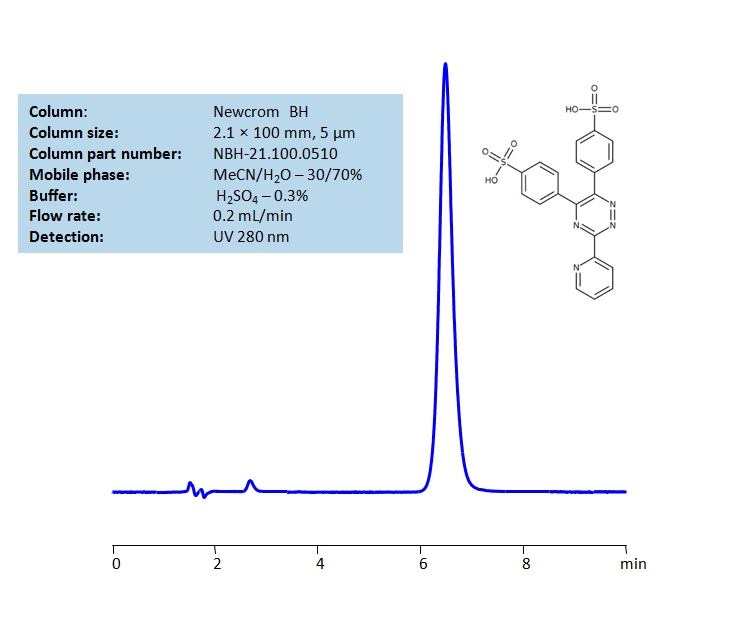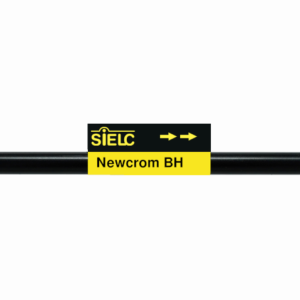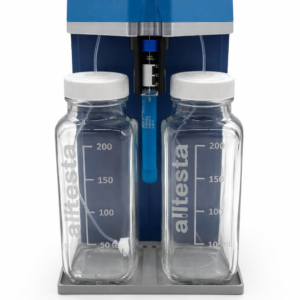HPLC Method for Ferrozine on Newcrom BH by SIELC Technologies
High Performance Liquid Chromatography (HPLC) Method for Analysis of Ferrozine
Ferrozine is a common reagent and indicator used for analyzing and detecting iron. Multi-charged molecules, such as Ferrozine, generally have a tendency to exhibit poor peak shape on reverse-phase HPLC columns, where they show significant tailing.
This compound can be retained with great peak shape on a Newcrom BH mixed-mode column. Ferrozine can be measured at low UV. Using a Newcrom BH mixed-mode column and a mobile phase consisting of methanol (MeOH) and water with perchloric acid (HCLO4) buffer, Ferrozine can be retained and UV detected at 280 nm with precise resolution.
| Column | Newcrom BH, 2.1 x 100 mm, 5 µm, 100 A, dual ended |
| Mobile Phase | MeOH/H2O – 30/70% |
| Buffer | HClO4 – 0.3% |
| Flow Rate | 0.2 ml/min |
| Detection | UV 280 nm |
| Class of Compounds | Indicator |
| Analyzing Compounds | Ferrozine |
Application Column
Newcrom BH
Column Diameter: 2.1 mm
Column Length: 100 mm
Particle Size: 5 µm
Pore Size: 100 A
Column options: dual ended






